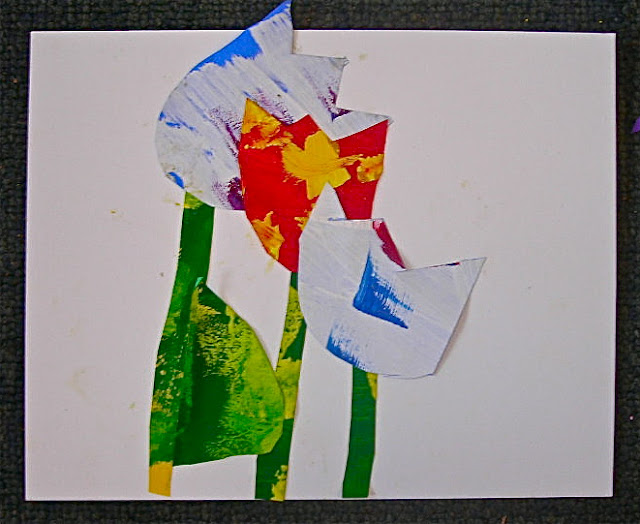Kindergarteners started this lesson viewing at a collection of paintings on the Smartboard, looking for what they all had in common. (They all had a lot of circles.)
To start their circles, students used 2 primary colored washable markers (we used regular Crayola brand) to color the top of their marker. Then they brushed clear water on their paper, put the marker on the wet spot and twisted. Even though most of these kids knew what color to expect from the mixing, I still heard a lot of exclamations, "Oooooo, I made orange!!!!" I wrote more about this process here.
After printing 3 or 4 circles, I reviewed with the kids how to use the sides of the markers to get a thick line and they drew concentric circles around their prints (leaving a white space between lines) until the lines "bumped" another circle. During this, I walked around helping those who needed it to hold the marker and turn the paper as they tried to get that thick line. Our kindergartens have 26 - 28 kids in a class, so I had to move fast!!!
The next step was to "paint" water in the white spaces, touching the side of the brush to the marker line. There were more "oooohs amd aaaahs" as the color from the marker lines moved into the white spaces making a light tint. Such fun!!!
Their last step was to cut out their shape and glue it (using small dots of Glue All around the edges) and place it in the center of a black 9" X 12" piece of construction paper.
 |
| Using the markers and water looks a lot like watercolor, doesn't it? For kids who may not have paint at home, this is a simple way to get the painterly look!! |
Kinders used a lot of skills in producing this art piece: printing, using the markers in a new way, brushwork, cutting curves, planning colors, gluing, They all did a GREAT job and I'd say are ready for 1st grade. Not long now -- only 3 weeks!!!






































